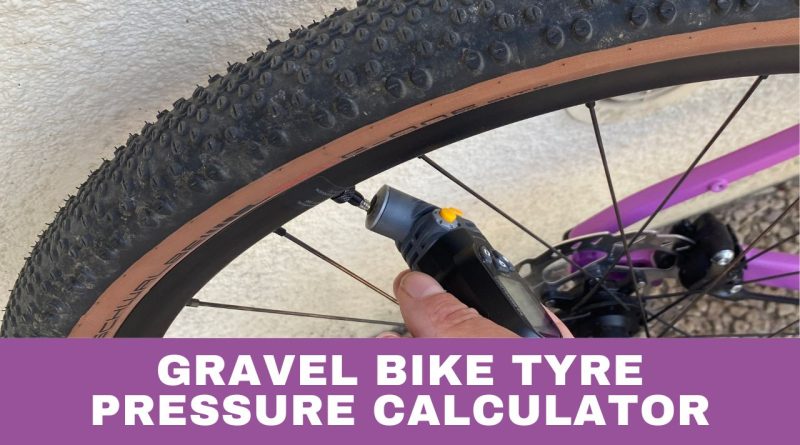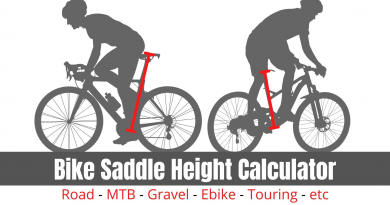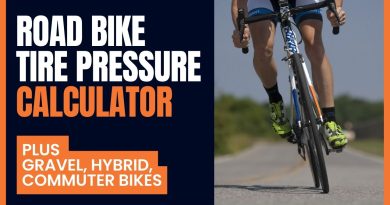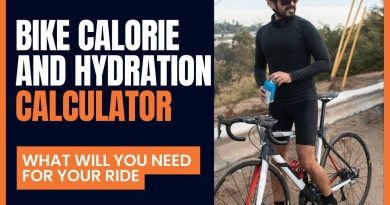Gravel Bike Tyre Pressure Calculator
This Gravel Bike Tyre Pressure Calculator helps you find the optimal pressure for your gravel rides, ensuring both safety and performance. By considering factors such as rider and bike weight, tyre width, intended use, and weather conditions, it offers a tailored recommendation for both your front and rear tyres.
Gravel Bike Tyre Pressure Calculator
Rider + Bike Weight (kg):
Tyre Width (mm):
Preferred Use:
Weather:
Results
Front Tyre (psi):
Rear Tyre (psi):
Front Tyre (bar):
Rear Tyre (bar):
Please note: This tool I only meant to be used as a starting point. Please stay within the recommendations of the tyre manufactures specifications.
Gravel Bike Tyre Pressure Chart
Remember, this is a generalized guide and may not fit every situation or individual preference. It’s also worth noting that tire and rim construction, tubeless vs. tubed setups, and other factors can influence the ideal tire pressure. Always adjust based on personal experience and riding conditions.
| Rider Weight | Tire Width | Front Tire Pressure (PSI) | Rear Tire Pressure (PSI) |
|---|---|---|---|
| < 50kg (110lbs) | |||
| 30-32mm | 35-45 | 38-48 | |
| 33-35mm | 30-40 | 33-43 | |
| 36-38mm | 25-35 | 28-38 | |
| 39-42mm | 23-33 | 26-36 | |
| 43-45mm | 20-30 | 23-33 | |
| 46-50mm | 18-28 | 21-31 | |
| >50mm | 16-26 | 19-29 | |
| 50-70kg (110-155lbs) | |||
| 30-32mm | 40-50 | 43-53 | |
| 33-35mm | 35-45 | 38-48 | |
| 36-38mm | 30-40 | 33-43 | |
| 39-42mm | 28-38 | 31-41 | |
| 43-45mm | 25-35 | 28-38 | |
| 46-50mm | 22-32 | 25-35 | |
| >50mm | 20-30 | 23-33 | |
| 70-90kg (155-200lbs) | |||
| 30-32mm | 45-55 | 48-58 | |
| 33-35mm | 40-50 | 43-53 | |
| 36-38mm | 35-45 | 38-48 | |
| 39-42mm | 33-43 | 36-46 | |
| 43-45mm | 30-40 | 33-43 | |
| 46-50mm | 27-37 | 30-40 | |
| >50mm | 25-35 | 28-38 | |
| > 90kg (200lbs+) | |||
| 30-32mm | 50-60 | 53-63 | |
| 33-35mm | 45-55 | 48-58 | |
| 36-38mm | 40-50 | 43-53 | |
| 39-42mm | 38-48 | 41-51 | |
| 43-45mm | 35-45 | 38-48 | |
| 46-50mm | 32-42 | 35-45 | |
| >50mm | 30-40 | 33-43 |
The Importance of Tyre Pressure in Gravel Biking
Your gravel bike’s performance heavily relies on its tyre pressure. Your tyres form the sole connection between your bike and the terrain. Ensuring optimal tyre pressure enhances your ride, giving you better grip across different terrains and significantly reducing the risk of punctures.
Gravel Bike Tyre Pressure Insights
Accurate tyre pressure directly influences the rolling resistance and overall comfort. An under-inflated tyre increases energy consumption due to increased friction and tyre deformation. Furthermore, this can result in sidewall and rim damage, and if you’re using tubeless tyres, you risk a “burp,” where the tyre temporarily loses its seal.
Conversely, over-inflation has its downsides. High pressure can transfer vibrations to the rider, reducing comfort. Over-inflated tyres may skid easily and might not adapt well to trail imperfections.
Debunking the Myth: Harder Isn’t Faster
While high tyre pressures might feel efficient, they often aren’t. Beyond a specific threshold, excessive pressure can decrease grip, amplify vibrations, and strain your muscles.
Tools for Precise Pressure Measurement
To achieve optimal tyre pressure, invest in a high-quality floor pump with an integrated pressure gauge. Additionally, consider acquiring a premium tyre pressure gauge to fine-tune your tyres to perfection.
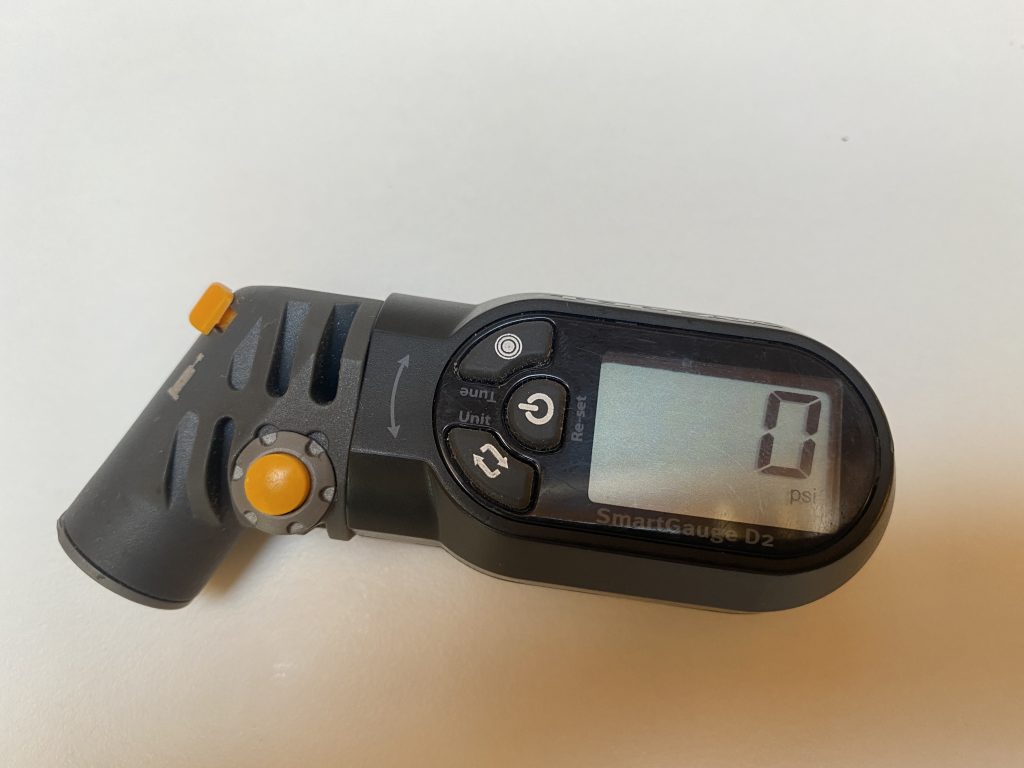
Gravel Bike Tyre Pressure Recommendations
Manufacturers often provide tyre pressure guidelines based on rider weight. However, after inflating, always measure the actual tyre size, as the width can vary. Factors like hookless rims can also affect the maximum permissible tyre pressure. Regularly check tyre pressures since they naturally decrease over time.
see: Grave bike calculator or gravel bike tyre pressure chart.
Factors Influencing Tyre Pressure Selection
Tyre and Rim Width: The actual width of tyres can differ from their labeled size. It’s often a good idea to measure the rim width with digital callipers for better precision. The tyre’s shape also changes based on rim width. Using the ETRTO 2020 standard can guide you on matching tyre-to-rim width.
Tyre Construction: Different brands have unique methods and materials. One tyre’s optimal pressure might not suit another tyre of the same size.
Rider and Equipment Weight: Heavier riders or loaded bikes might need higher pressures. The weight distribution between the two wheels isn’t equal, with the rear wheel typically bearing more load.
Terrain: The surface you’re cycling on greatly influences your optimal tyre pressure. Whether it’s smooth gravel or wet trails, adjust accordingly.
Tubeless Tyres: Opting for tubeless tyres allows you to run at lower pressures without the fear of pinch-flats, providing more grip and comfort.
Tyre Inserts: These provide added protection to your rims, allowing for even lower tyre pressures.
Weather and Temperature: Adjustments might be necessary based on wet trails or frozen paths. A slight decrease in pressure can increase grip on slippery terrains.
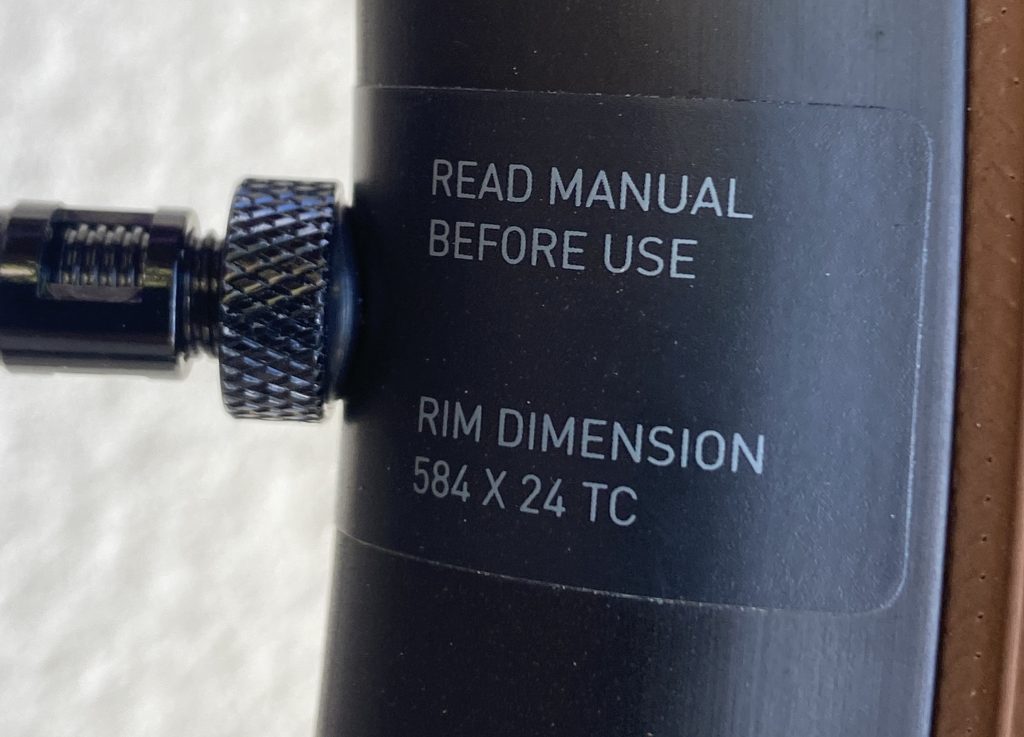
New ETRTO Standards Table
ETRTO stands for “European Tyre and Rim Technical Organisation”. These standards dictate bike tyre sizes based on specific rim widths, also used on motorbikes and cars. Tyre size varies depending on the rim width. Rising interest in wider rims influenced this change in naming bicycle tyre sizes.
Table of New ETRTO standards (from January 2020)
| Tyre section | Measuring rim width (mm) |
| 18-21 | 15C |
| 22-24 | 17C |
| 25-28 | 19C |
| 29-34 | 21C |
| 35-46 | 23 |
| 47-57 | 25 |
| 58-65 | 30 |
| 66-71 | 35 |
| 72-83 | 45 |
| 84-113 | 76 |
| 114-132 | 94 |
Here’s a link to the ETRTO standards website if you want to learn more.
Bike Faff provides a number of tools to help you with setting up your bike:

